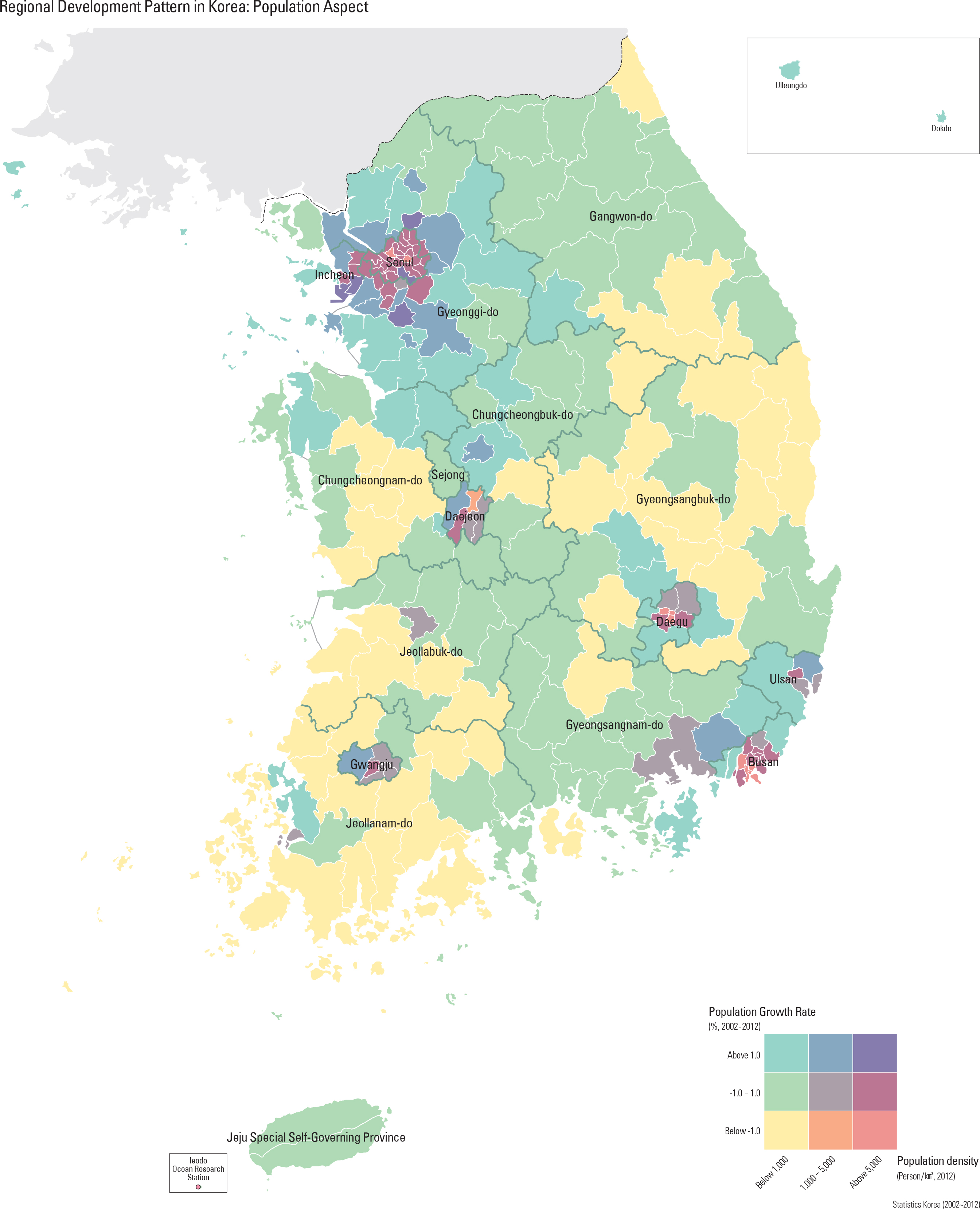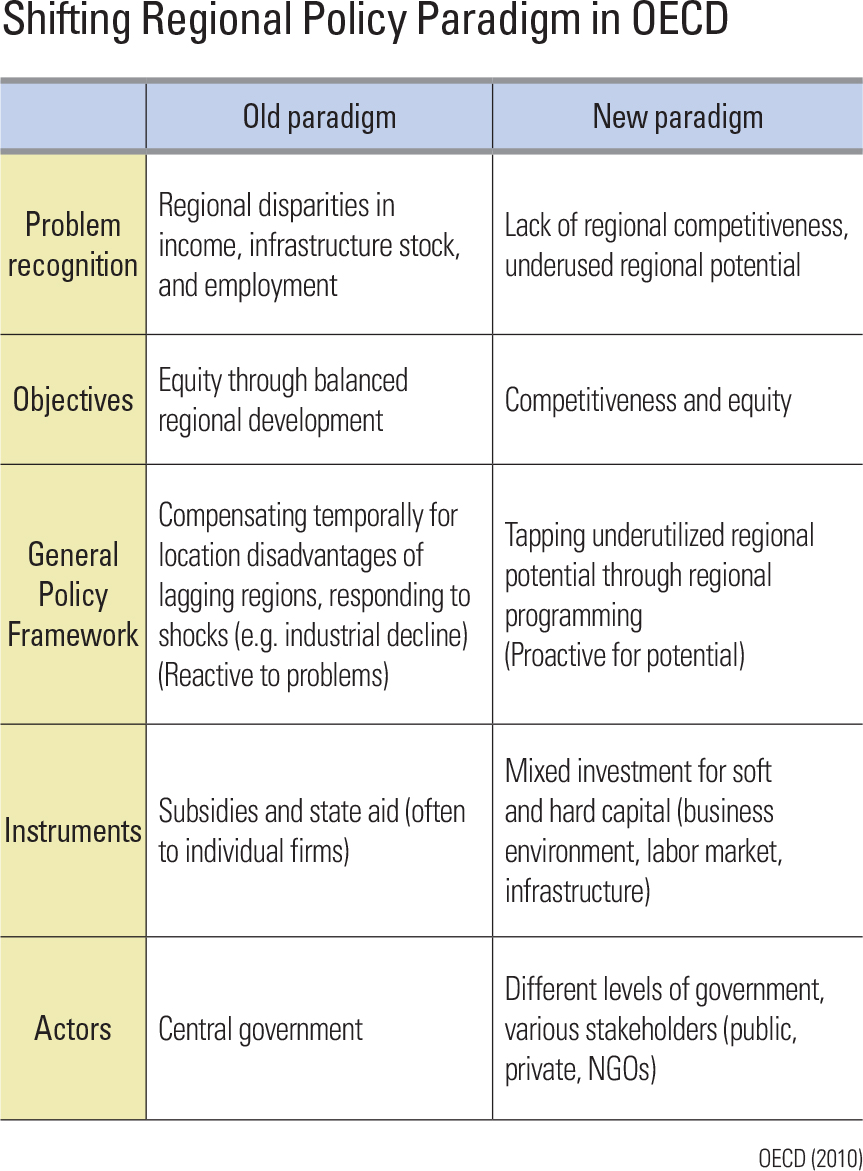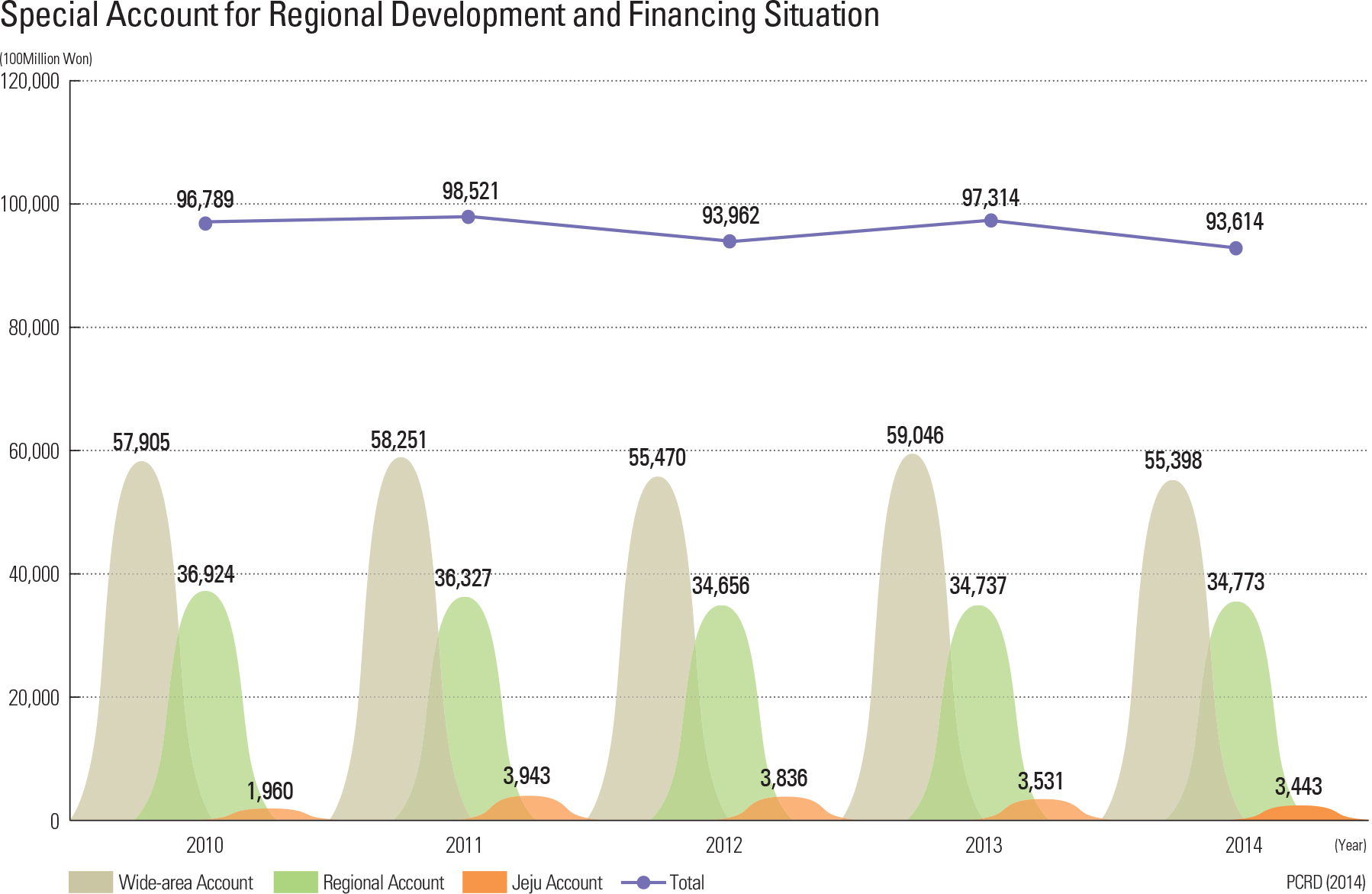In the Special Act on Balanced National Development (SABND) that provides an institutional basis for regional development policy in Korea, regional development is defined as “activating regional economies by facilitating region-specific development and inter-regional cooperation based on autonomy and creativity, and strengthening regional competitiveness by improving the quality of life of citizens.”
In addition, the SABND supports regionally specific development according to a region’s key features and its comparative advantages. Special accounts were set aside for regional development in order to effectively pursue both the promotion of a high quality of life as well as the intensification of regional competitiveness. These special accounts were separated into the Living Infrastructure Account, the Economic Development Account, and the Jeju Special Self-Governing Province Account and Sejong Special Autonomous City Account in 2014. These accounts began to provide more differentiated regional support in accordance with regional and industrial features. SABND’s new focus on quality of life issues shifts the orientation of contemporary Korean development policy toward the matter of larger human concerns. Specifically, there is now a concerted effort to alleviate the problems created by urbanization and regional economic disparity not only by providing decent jobs and social and cultural opportunities but also by fostering health, happiness, and optimism.
This new approach attempts to construct cooperative partnerships between residents and their local and central governments. This new trend in regional development signals a shift in focus from emphasizing economic competitiveness and all that entails to placing a higher premium on the quality of life for all Korean citizens. For the first time since the early post-war years, the happiness of the citizenry is now a top priority, one which is reflected in the language and the enactment of current development policy.
The spatial patterns of regional development in Korea continue to be very uneven. The structural regional disparities between the capital region and the provinces as well as between the urban and the rural regions resulted from the rapid modernization and industrialization in Korea in the post-war decades. There have been various policy-driven attempts to help overcome these disparities, but thus far such redressing has proven to be a long and complicated process. In the 2000s, there was a policy shift toward emphasizing both regional empowerment as well as the significance of quality of life issues, both of which were intended to lessen the regional disparity. The Special Account for Balanced National Development, introduced in 2005, was renamed the Regional Development Special Account due to changes in the policy framework for regional development in the Lee Myungbak administration. In 2013, the Park Geun-hye administration ushered in a shift in regional development policy that resulted in a new focus on primary-level capacity. The enactment of projects such as the “HOPE Area” represents a new era in regional development. The paradigm shift can be seen in gestures such as the renaming of the Special Account for Regional Development: The Jeju Special Self-governing Province Account remains the same, but the Sejong Special Autonomous City Account has been newly created.


